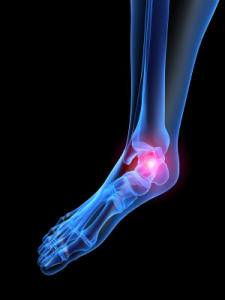I often get asked by patients what is the difference between a STRAIN and a SPRAIN, so here goes…
A “STRAIN” is an injury to a muscle resulting in partial or total tearing of the muscle. There are three levels: mild or first degree, moderate or second degree, and severe or third degree. They are caused by sudden movement, overuse, forceful stretching, violent contraction or unaccustomed repeated minor trauma.
“SPRAINS” are an injury of the joint, in which the bones momentarily come out of alignment such that joint structures i.e. ligaments, joint capsules and possibly tendons, will be torn. There are also three degrees of sprains.
SPRAINS can be caused by a violent, sudden bend or twist beyond the normal range of motion of the joint. There can be contributing factors that may make some people more susceptible to SPRAINS such as joint pathologies (arthritis). Altered biomechanics may lead to muscle imbalances and ligamentous stretching. Congenital ligamentous laxity may leave a joint more prone to injury.
 Treatment for both STRAINS and SPRAINS is very similar. Ice for the first 24-48 hours to decrease inflammation, compression and elevating the area will also help. Massage therapy would help to decrease swelling through lymphatic drainage and other techniques. Ultrasound, performed by a Physiotherapist, helps to decrease swelling and promote healing. Massage therapy can benefit the unaffected areas and compensating structures to prevent hypertonicity and trigger points. You should maintain range of motion of the adjacent joints to prevent connective tissue contraction, and as the injury heals aid in the formation of a mobile and healthy scar. In the situation of a second or third degree sprain you should first consult with your Physician or Physiotherapist prior to starting massage.
Treatment for both STRAINS and SPRAINS is very similar. Ice for the first 24-48 hours to decrease inflammation, compression and elevating the area will also help. Massage therapy would help to decrease swelling through lymphatic drainage and other techniques. Ultrasound, performed by a Physiotherapist, helps to decrease swelling and promote healing. Massage therapy can benefit the unaffected areas and compensating structures to prevent hypertonicity and trigger points. You should maintain range of motion of the adjacent joints to prevent connective tissue contraction, and as the injury heals aid in the formation of a mobile and healthy scar. In the situation of a second or third degree sprain you should first consult with your Physician or Physiotherapist prior to starting massage.
The best way to reduce strains and sprains is to have a great pre and post activity regimen. Before starting an activity, including a walk, start off slowly to warm up the muscles and other soft tissues, and then gently stretch all the muscles you will be exercising. Also strengthening the muscles surrounding a joint can help to protect it from SPRAINING. Then at the end of your workout always STRETCH and cool down. Massage therapy helps to even out muscle imbalances and can reduce increased muscle tension. Physiotherapists can give you a proper stretching program to help balance muscle hypertonicities.
So you hopefully now are full bottle! All the best in your sporting pursuits!
Mike Masiello
Physiotherapist
Contact Bodysmart for a Physiotherapy consultation to thoroughly assess any injuries. Appointments can be booked here or by contacting 9481 8708.











